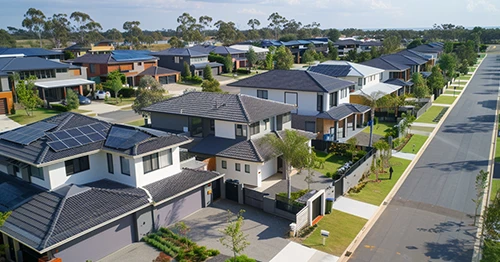Updated: 26 Dec, 2024
Housing Values Rise for the Sixth Consecutive Month
Housing values rose for the sixth consecutive month in August, with the Home Value Index (HVI) increasing by 0.8%. This represents a slight uptick from the 0.7% growth observed in July. Since hitting its low point in February 2023, the HVI has increased by 4.9%, adding $34,301 to the median dwelling value.
Every capital city except Hobart recorded a rise in dwelling values in August. Brisbane experienced a 1.5% increase, while home values were up 1.1% in Sydney and Adelaide.
Tim Lawless, CoreLogic’s Research Director, explained, “Some other capital cities are better described as flat, with Hobart home values unchanged since stabilising in April, while values across the ACT have risen mildly, up 1.0% since a trough in April. These are also the two capital cities where advertised supply is tracking higher than a year ago, suggesting a rebalancing between buyers and sellers is a key factor contributing to the stability of values in these regions.”
House values experienced a sharper recovery trend than unit values. At the combined capital levels, house value has risen 6.3% since bottoming out in February, while unit values have risen 4.9%. The higher drop in house values of 10.7% during the downturn led to a sharper recovery than in unit values, which fell only 6.5%.
What’s Happening With The Regional Markets of Australia?
Values were down in non-capital city regions of NSW and Victoria, by 0.2% and 0.6%, respectively. Regional Queensland and South Australia values were up by 0.8% and 0.9%, respectively. Values held relatively flat in regional Western Australia and Tasmania.
Lawless made the following observations:
- Regional markets in Australia are not experiencing the same level of recovery as capital cities, as internal migration trends normalise and there is less demand from net overseas migration.
- Prior to the pandemic, regional Australia accounted for only 15% of total net overseas migration, historical data from the ABS shows.
- Housing values in combined regional areas have increased by 1.6% since February, compared with a larger 6.0% rise in values across the combined capitals.
- Over the past three months, areas such as Coolangatta, the Sunshine Coast Hinterland, and Gold Coast North experienced large capital gains, with home values surging by 6.2%, 5.8%, and 5.6%, respectively. Strong internal migration into these areas is believed to be a major factor supporting housing demand and driving up housing values.
Property Market Highlights
Here’s what happened to Australia’s property market in August 2023.
- The lower-than-average advertised supply levels are still a key factor supporting upward pressure on home values. Even though the flow of new listings rose in winter, total advertised supply levels remained 15.5% lower than a year ago across the combined capitals and 19% below the previous five-year average.
- Over the past two months, the ACT experienced a substantial surge in total advertised stock levels, with listings increasing by 10.2%.
- Sydney and Melbourne also experienced a rise in total advertised supply, up 9.8% and 8.3%, respectively; however, stock levels in both cities were lower than a year ago.
- In Perth, Adelaide and Brisbane, advertised supply levels were 40% below the previous five-year average and have continued to trend lower.
- CoreLogic’s estimate of home sales over the three months ending August was 4.6% lower than a year ago. Capital city sales activity was estimated to be 3.6% lower than a year ago, while regional home sales were down 6.4% from last year.
- The national rental index increased by 0.5% in August. Annual rental growth for houses in Melbourne reached a new record high of 11.9% over the past 12 months. Perth units reached a new cyclical high in the annual growth rate, up 16.4%.
- There was a slowdown in rental growth, even with tight rental vacancy rates through August. The vacancy rate for combined capitals fell to a historical low of 1.1%. Regional vacancies trended at 1.4%, which is the lowest since November last year.
- Since a peak of 3.89% in April, gross rental yields have edged consistently lower. They fell 3.82% in August.
What Is The Outlook For Spring?
- Be on the lookout for rising stock levels. Over the past two months, there has been a rise in total listings in some regions, which supported the deceleration in value growth.
- The spring selling season might be more active than last year.
- Homebuyers will continue to face hurdles, especially those with low deposits or high levels of debt.
- Borrowers will still be assessed at a buffer rate of three percentage points, which means most will need to demonstrate the ability to afford a mortgage at a 9% interest rate.
- Low consumer sentiment will continue to dampen home-buying activity. However, the combination of lower inflation and the belief that interest rates have reached their peak is expected to improve consumer sentiment.
- The portion of borrowers falling behind on their mortgage repayments will rise through 2023 and 2024, increasing the likelihood of mortgage stress.
- Robust population growth, coupled with a lack of substantial supply response and sustained net overseas migration, is expected to drive housing demand in the coming years.
- The latest estimates from the National Housing Finance and Investment Corporation show that the housing sector in Australia is predicted to face a shortfall of about 175,000 dwellings by 2027. This undersupply is likely to exert upward pressure on housing prices over time.






